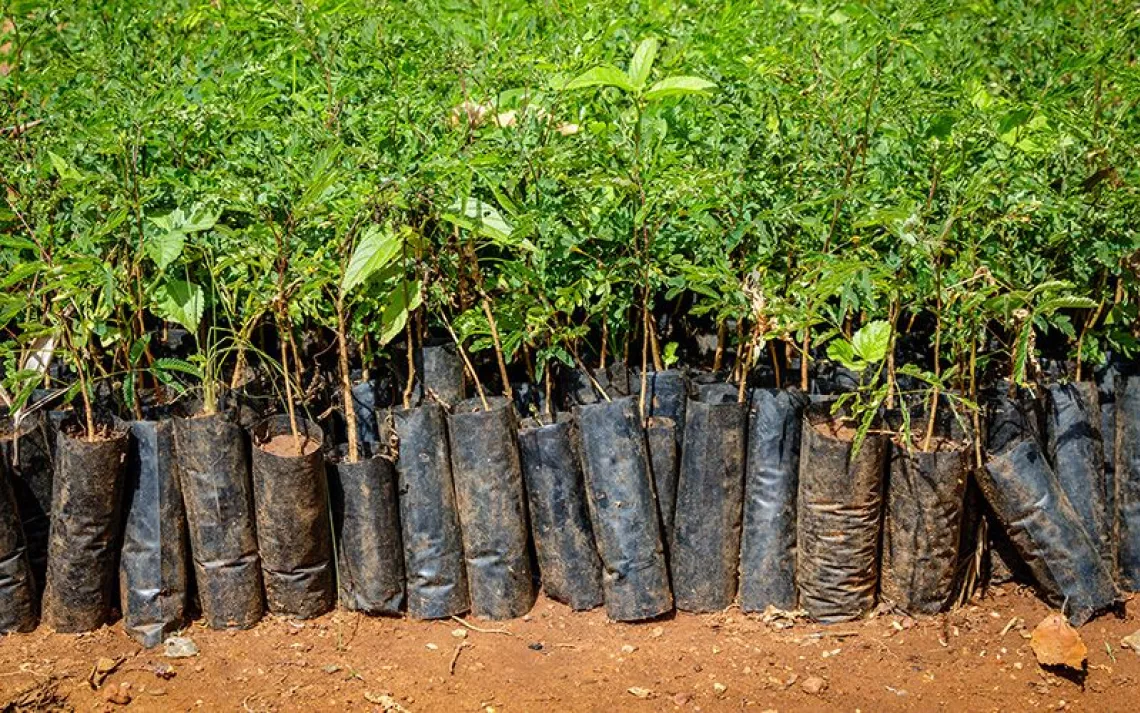The Top 10 Coolest Schools 2008
Ten that get it
10: TUFTS UNIVERSITY
8,500 students | Medford, MA
Recent eco-moves include joining a program that lets students help pay for renewable energy projects in Massachusetts through their electricity bills and creating a campus printing service that uses soy-based inks and recycled paper. Tufts is also publishing a new guide to campus life with an eco-map of places where students can find such greenery as free compact fluorescent lightbulbs, recycling bins, and Zipcars.
Now is the time for environmental journalism.
Sign up for your Sierra magazine subscription.

9: UNIVERSITY OF WASHINGTON, SEATTLE
39, 250 students | Seattle, WA
The home of the Huskies is one of the few universities whose overall energy use has decreased (by 10 percent between 2000 and 2005) despite campus growth. All the university's energy comes from renewable sources (including hydropower), and 14 buildings are slated for construction or renovation in compliance with LEED standards.
8: OBERLIN COLLEGE
2,200 | Oberlin, OH
Last spring Oberlin students competed in the Ecolympics to reduce their energy use and waste. Even in the Ecolympics off-season, they stay at it. Last fall eight students secured university funding for a new themed residence dedicated to green, energy-efficient living.
7: UNIVERSITY OF FLORIDA, GAINSVILLE
50,000 students | Gainsville, FL
With the 2007 national football and basketball championships under their belt, the Gators went on to become winners in environmental policy. A water facility processes 3 million gallons of reclaimed water per day and serves more than 90 percent of the campus. While most university fleet vehicles run on E85 ethanol (85 percent ethanol, 15 percent gasoline), some chug along on used oil from campus cafeterias.
6: ARIZONA STATE UNIVERSITY
51, 500 students | Tempe, Arizona
With the nation's second-largest student population, Arizona State University can make a big impact with small changes. Although the Sun Devils have not switched entirely to xeriscaping with native plants, they have phased out wasteful flood irrigation from more than 70 percent of the campus and now water most of the grounds at night. Last fall ASU inaugurated its School of Sustainability, where students learn about--and create--land-use and urban-planning models that minimize harm to the environment.
5: EVERGREEN STATE COLLEGE
4,400 | Olympia, WA
Evergreen first made headlines for getting rid of grades and majors in the 1970s. Now the college creates buzz with its environmental policies, which include a mandate that all new building projects comply with silver-level Leadership in Energy and Environmental Design (LEED) standards. Less than a quarter of students use their intercity bus passes (included with tuition) to get to school, but new bus shelters with solar-powered lighting may help them get jazzed about public transit.
4: WARREN WILSON COLLEGE
850 students | Swannanoa, NC
Forgoing football games and frats, Warren Wilson's Fighting Owls work 15 hours per week plowing the college's organic fields or helping with ecofriendly building projects.
3: UNIVERSITY OF VERMONT
10, 750 students | Burlington, VT
Don't know which lightbulb to buy? If you lived on campus at the University of Vermont, home of the Catamounts, you'd know whom to ask. Dorm volunteers offer fellow students green guidance.
2: UNIVERSITY OF COLORADO
29,000 students | Boulder, CO
Eight years ago the University of Colorado (CU) became the first U.S. university to buy renewable energy credits. Today the mile-high school supports local offset projects. CU does more than buy its way out of carbon guilt, however. The Buffaloes have also made strides in reducing emissions produced in the first place: Eighty percent of students commuted car free last year.
1: MIDDLEBURY COLLEGE
2,350 students | Middlebury, VT
Another college with Middlebury's record might have taken it easy on green initiatives this year. After all, Midd's outdoorsy intellectuals had already earned recognition for such ambitious projects as recycling materials from a demolished building. But the school pressed on, giving its study-abroad program a shot of green last fall: A partnership with a renewable energy company makes it easy for students to offset carbon dioxide emissions associated with travel. More important, the Panthers now learn how to leave a lighter footprint on their excursions, and study-abroad students can win $500 grants to research environmental solutions like geothermal power in their adopted countries.
 The Magazine of The Sierra Club
The Magazine of The Sierra Club



